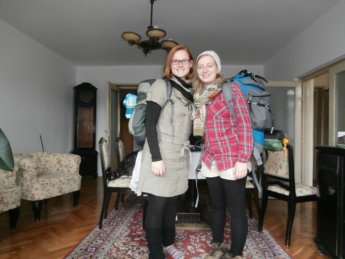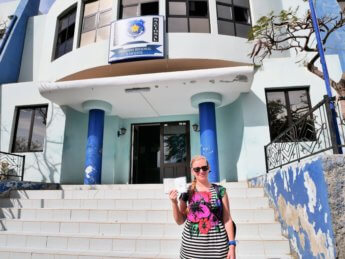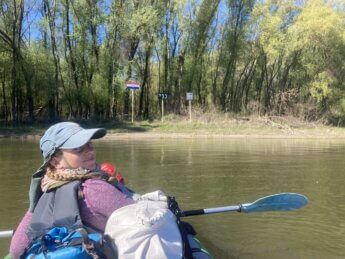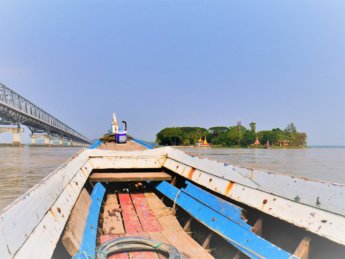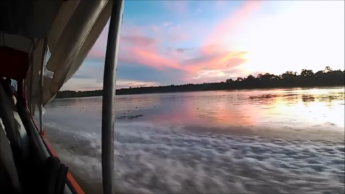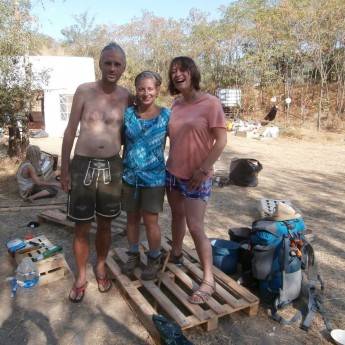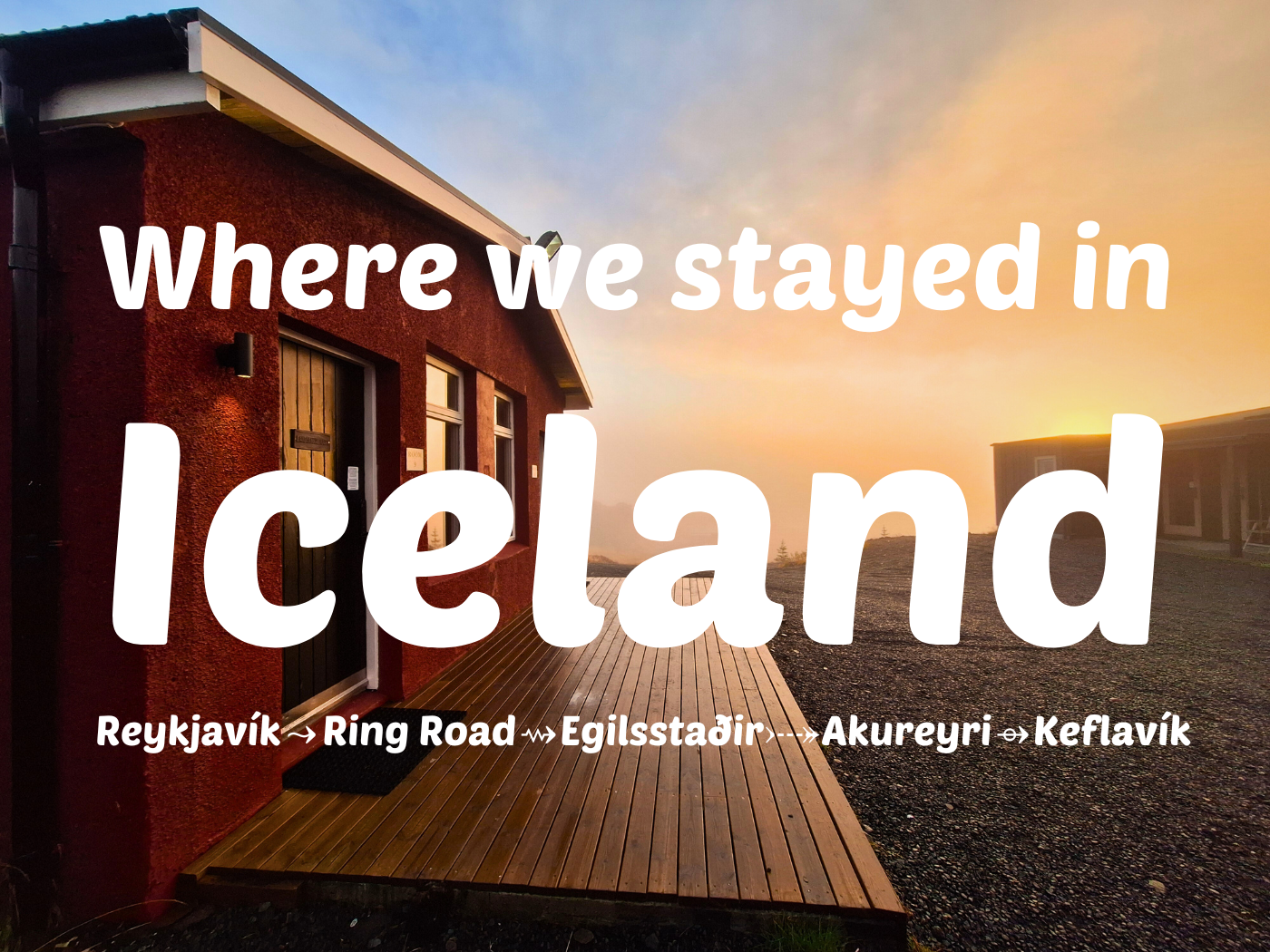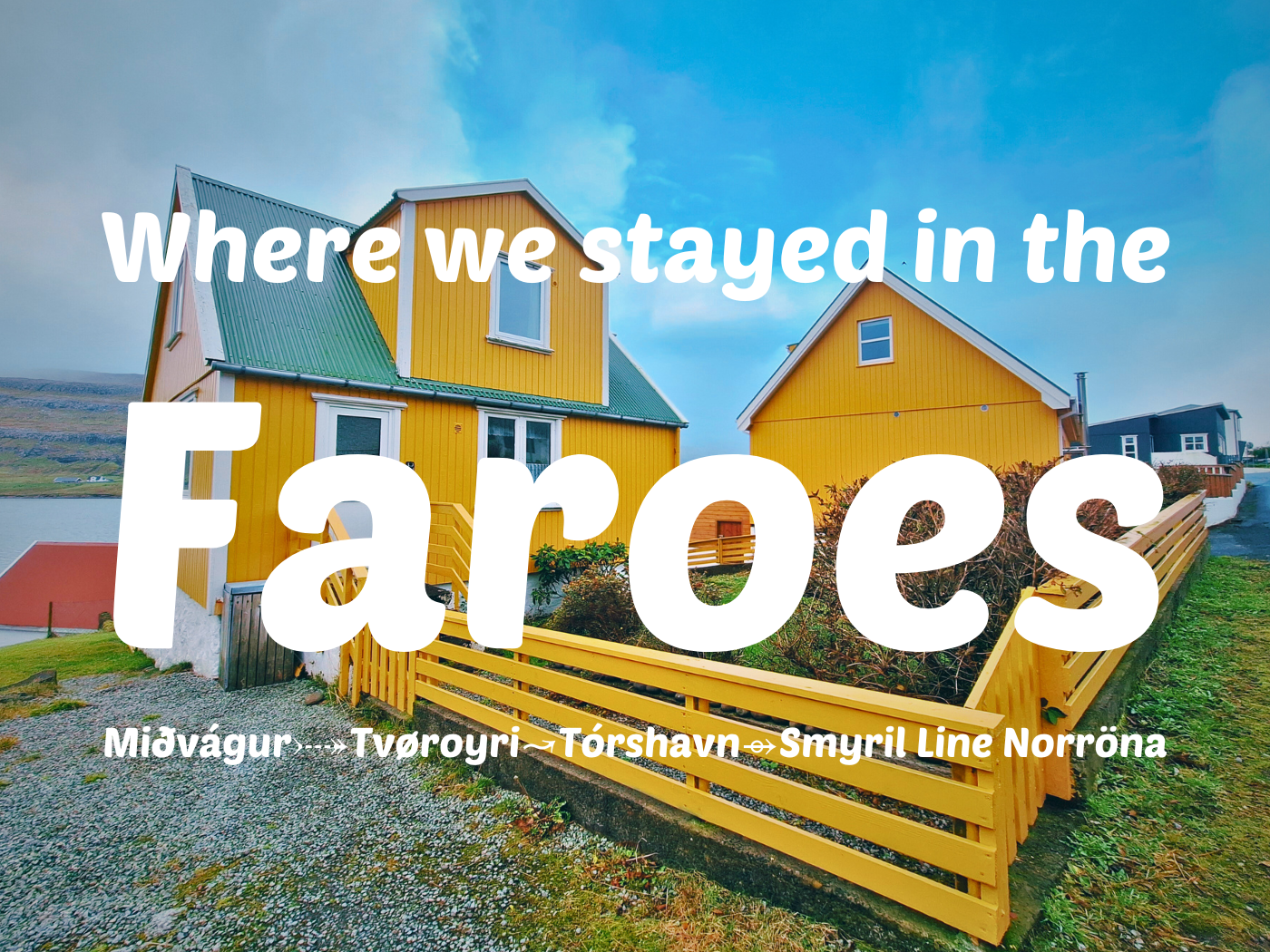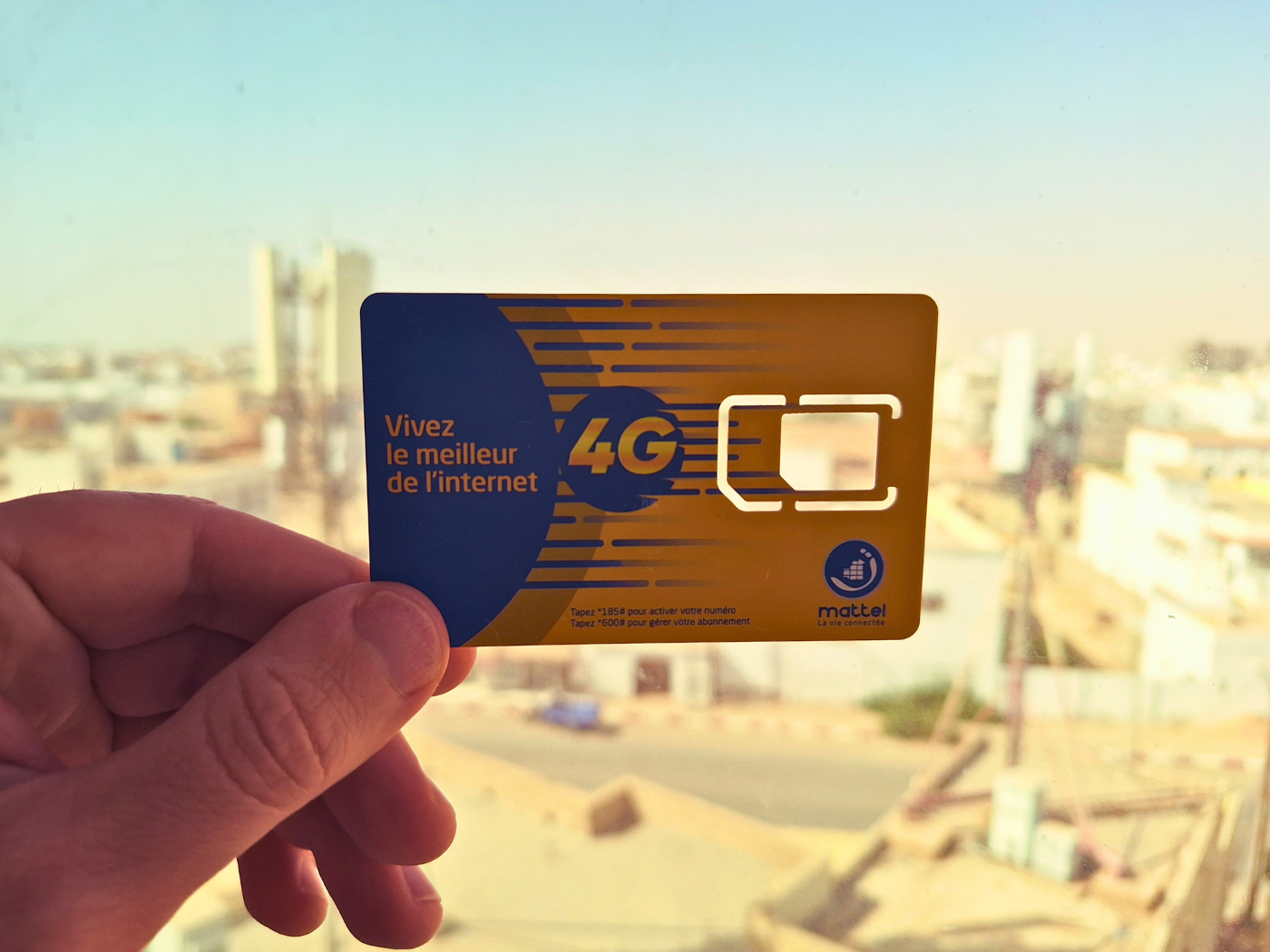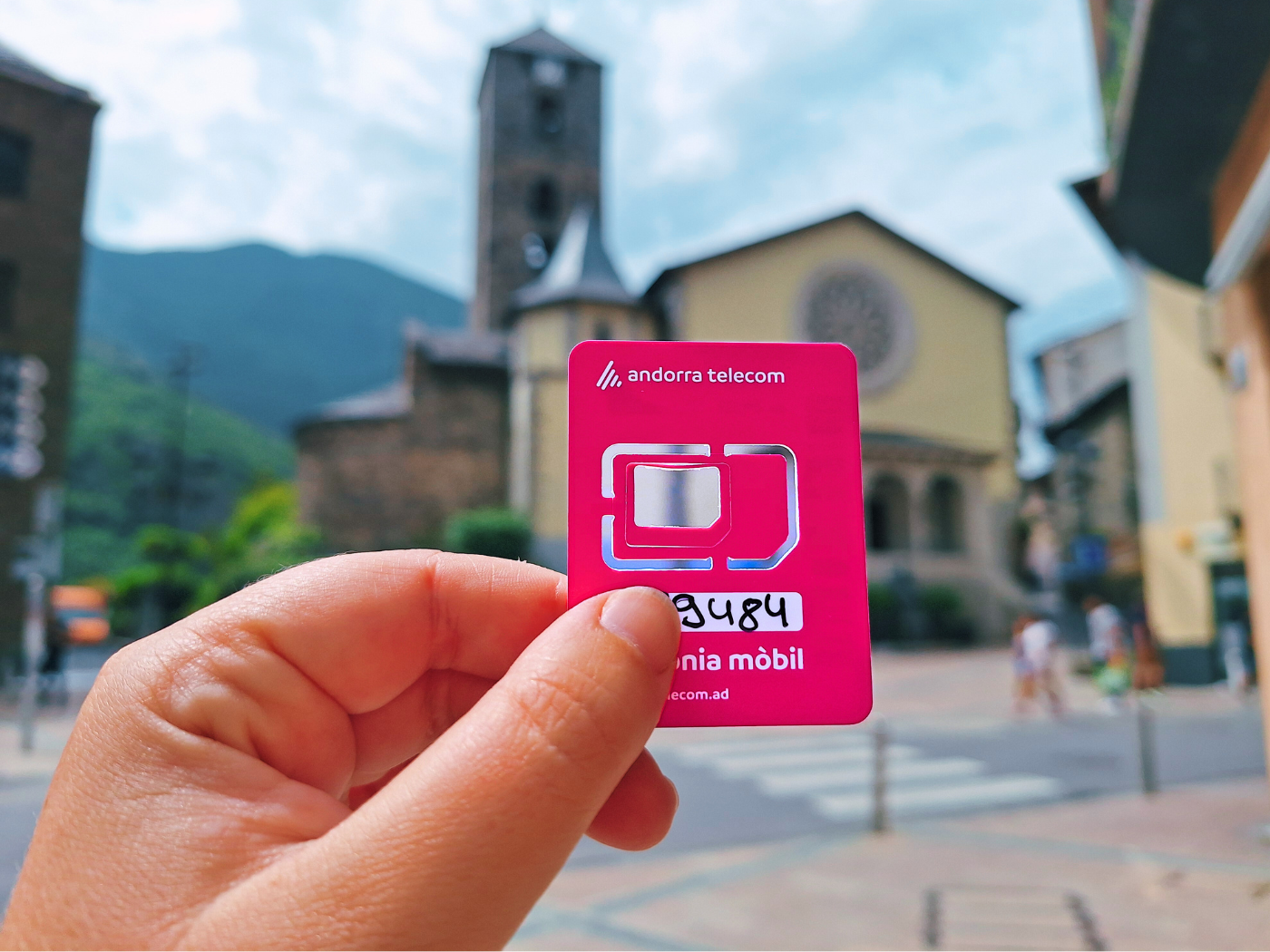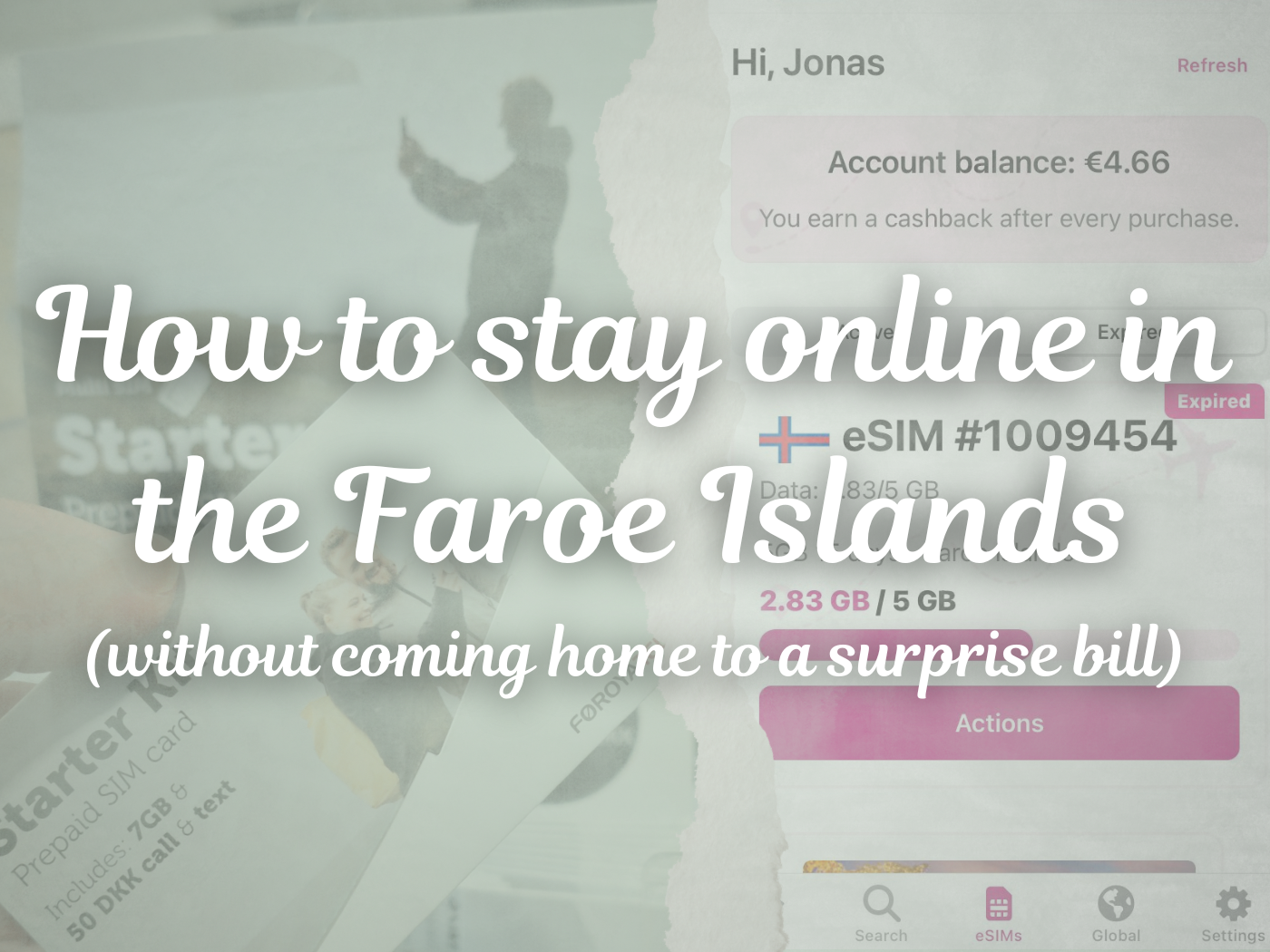
Traveling to the Faroe Islands? Cool, but don’t forget to turn off roaming on your phone. The Faroes are not in the EU or EEA, despite being a country under the rule of Denmark. These are your options for staying online while traveling in the Faroe Islands: eSIM, (expensive) physical SIM card, or the secret third option
Contents
- 1 How did we get here? The Faroe Islands are Danish, but not EU
- 2 Option 1: Get a Faroese eSIM
- 3 Option 2: Global eSIM (when you don’t need a lot of data)
- 4 Option 3: Føroya Tele Physical SIM Card (How Retro!)
- 5 Option 4: Icelandic or Danish SIM Cards
- 6 Option 5: Return to Monke
- 7 Good info? Consider buying me a hot chocolate milk ❤️
- 8 Save your friends from surprise bills! Kindly share this post
How did we get here? The Faroe Islands are Danish, but not EU
You might be taking a trip to Denmark or Iceland and think, why not do a side quest to the Faroe Islands? They’re an incredible destination with amazing nature, distinct identity and history, and friendly people to hitchhike with.
Though often ignored as a country as they aren’t completely sovereign under the crown of Denmark, they do have home-rule (just like Greenland). This self-governance means that as a country, the Faroe Islands handles its own internal affairs. But it lets Denmark handle most of its foreign affairs.
Sounds like the Faroe Islands should be a part of the European Union (EU) as they are a part of Denmark, which joined the EU in 1973… right?
Well, no. The Faroese elected to stay out of the EU. Why? Fish.
The Faroe Islands are also not part of the European Economic Area (EEA), unlike Norway and Iceland. Being part of the EU and/or the EEA means your country signed the EU Roaming Regulation, also known as ‘roam like at home‘. Just like in Andorra, if you roam with your mobile data from any innocent EU provider, you’ll be smacked in the face with a crazy bill at the end of your trip. We looked it up: our German FONIC SIM card would charge €12.000 per GB. That’s not a typo. If you want to know what traveling in the EU was like in the early 2010s, try this. (Please don’t!)
We would have been blindsided by this if our accommodation in the Faroe Islands hadn’t written in its welcome email the following:
“Your trip to the Faroe Islands is almost here! Order your Faroese eSIM today and enjoy instant, hassle-free internet and phone connection when you land Your trip to the Faroe Islands is just around the corner!Please note that the Faroe Islands are not part of the EU’s free roaming zone, and using your mobile phone here can incur high charges. To stay connected without the hefty fees, consider purchasing a local eSIM from Føroya Tele.Benefits include:[Order Your eSIM Now]
- Instant Activation: Set up before you arrive.
- High-Speed Data: Enjoy fast and reliable 4G/5G connections.
- Cost-Effective: Avoid unexpected roaming charges.
Stay connected and make the most of your visit!”
Jonas immediately went to the prepaid SIM wiki to find out more (mostly outdated) info. So we only found out that the Faroe Islands are not part of these modern cooperative treaties because of this email… We thought we were just going to another part of Denmark, like the Åland Islands are a part of Finland.
So your EU SIM card won’t give you affordable data in the Faroe Islands. What is a traveler with a phone addiction to do? I’ll break down your options for staying online in the Faroe Islands down below.
Option 1: Get a Faroese eSIM
This obviously only works if your phone supports eSIM technology. I found out the hard way that my Samsung Galaxy A54 doesn’t, so I couldn’t go this way. However, Jonas’ iPhone does support eSIMs, so he got a Faroese eSIM from eSIM.sm as this one has the best price per GB. Coverage across all the islands we visited was fine.
Jonas installed the eSIM on his phone before our flight from Reykjavík. However, our flight got canceled, so he sat on this Faroese eSIM for another 32 hours before he could activate it. Once at Vágar Airport in the Faroe Islands, Jonas activated his eSIM.
eSIMs.sm has nine different plans for the Faroe Islands. Jonas had bought the bundle known as 5GB for 15 days at a cost of €10.70 or US$12.70. You should pick a bundle that fits the duration of your stay. Our original stay in the Faroe Islands was nine days, then down to eight.
Jonas’ eSIM worked well on all the islands. It’s possible to tether it to my phone so I could also use the internet sometimes. This eSIM company officially supports tethering, thankfully. This was a good choice for our trip and we didn’t finish the plan, despite some WiFi challenges in Suðuroy. No notes.
Usually, I recommend the very trusted Airalo eSIMs. But they are more expensive for the Faroe Islands. You can get this Faroese eSIM with a 5% discount already applied via this link. Alternatively, you can type in my discount code for eSIMS.sm, which is IrisTheHitchhiker.
If you’d still like to go with the (barely more expensive at €13 for 5GB, valid for 15 days) reputable eSIM company Airalo, here’s the link for the Faroese eSIM. I’ve also got you for discount codes. You can use NEWTOAIRALO15 at checkout to get a 15% discount on your first Airalo eSIM. If you’re a recurring Airalo customer, use AIRALOESIM10 for 10% off.
While the Faroese national telecom provider Føroya Tele does have an eSIM, it’s as expensive as the physical SIM card (see Option 3) at more than double the price of the eSIMs mentioned above and less flexible. However, if you like it, I love it…
All eSIMs Jonas has looked at for the Faroe Islands tell you to go into your settings to allow roaming. This request plus the fact that the prices are much lower than getting a local SIM card (see Option 3) indicate something funny is going on with the Faroese eSIM options… I’ll elaborate on that under Option 4.
Option 2: Global eSIM (when you don’t need a lot of data)
We found out too late – and it would have been a gamble – but eSIM.sm also has a Global eSIM. This one works in 155 countries and works very differently from other eSIMs. Like other eSIMs, it’s prepaid. But you just load an amount of money to your balance, and it subtracts from there. The minimum amount you can load on it is €5.
In the Faroe Islands, the Global eSIM charges you €2.46 per GB (at the time of writing). You’ll have to do the math, but as of now, the Global eSIM plan makes sense for the Faroe Islands if you expect to use 3GB or less. And you can of course take your balance to another country and finish it there.
Globally speaking, this eSIM is ideal for short stays with little data usage. Alternatively, it makes sense as an arrival eSIM before you get a physical local SIM card (which will never make sense for the Faroe Islands, unless you don’t have an eSIM-compatible phone). Most travelers stay in the Faroe Islands for a short time and in combination with visiting other countries, such as Iceland or Denmark.
No matter the country, you’ll get charged based on how much you use without rounding up. So if you only use 10MB, you will only pay as much. Another (unintended) advantage I’ve found of this is that it will prevent you from doomscrolling, as it’s simply too costly 🙂
This is perfect, because there’s no minimum commitment to it; you can use as little or as much of it, spread over many months of traveling the world. It doesn’t make sense for every country it covers (I’m looking at you, Fiji at a whopping US$58 per GB), so it will always remain necessary to check the prices of your next destination in the list. One example is Senegal, where I’ve also been in 2025, where the Global eSIM costs US$15.55 per GB, while data in Senegal on a physical SIM card is cheap. So it’s not a correlation to how much data costs inside a country, but how good a deal each eSIM provider can make with each country.
One downside I’ve found is that the Global eSIM doesn’t cover Jersey and Guernsey of the UK Channel Islands, nor Greenland, which I hope to go to in the future. So, 155 countries sounds like a lot and sounds like it should cover all of Europe, but alas, no.
Option 3: Føroya Tele Physical SIM Card (How Retro!)
If you’re like me and don’t have an eSIM-compatible smartphone – like I found out the hard way before traveling to Andorra this year – your only option for mobile data is to get a physical SIM card. One option is to get the one and only Faroese telecom provider Føroya Tele. They sell prepaid SIM cards for 197 DKK, or €26.38 or US$30.58. Oof. For that price, you get 7GB of data and 50 DKK worth of calls and texts, valid for 30 days.
While this definitely qualifies as extortion, it’s a real option if you stay in the Faroe Islands for a month.
Where to purchase a Faroese SIM card
Where do you buy a Føroya Tele SIM card in the Faroe Islands? When flying into Vágar Airport, there’s a tourist information office that sells physical SIM cards. However, your flight must arrive at a useful time for it to be open. On the airport website, they claim it’s always open after a flight arrival. In practice, we know not to rely on this at small airports.
Inside Tórshavn, there’s a physical shop where reviewers have bought their SIM cards. Location here. Some other towns, such as Hoyvík, Klaksvík, Saltangará, and Tvøroyri also have offices that (might) sell SIM cards. However, their reviews are often already 8 years old. The Tourist Information Center in Tórshavn might also sell SIM cards, but I’m not 100% certain. However, they’ll be able to point you in the right direction.
According to the tourism website, chance service station shops, kiosks, hotels, and post offices might sell physical Føroya Tele SIM cards. I have never seen them myself, so I think this info might predate the rise of the eSIM. Also, this website describes the telecom situation in the Faroe Islands as “[…]offering services at competitive prices.” which is a statement designed to make you feel poor. Don’t let them gaslight you; nothing about these prices is competitive.
The only place I’ve personally verified where you can buy a SIM card in the Faroe Islands in 2025 is on the Norröna ship operated by the Smyril Line. That’s the cruiseferry between Iceland and Denmark that stops in Tórshavn in the Faroe Islands both ways. We took it from Tórshavn to Hirtshals in Denmark in October. Their duty free shop aboard the ship called Sjóbúðin has a basket of Føroya Tele SIM cards at checkout for the standard price of 197 DKK. If you’re arriving in the Faroe Islands by ship, this is the easiest option to get a local SIM card in the Faroe Islands.
Option 4: Icelandic or Danish SIM Cards
After finding out that Iceland is part of Roam Like At Home whilst not being in the EU but the Faroes isn’t, we gained a lot more respect for Iceland and its value for money. It’s still poor value for money, but at least they wouldn’t have taken all your savings.
I digress…
There are non-Faroese SIM cards that have roaming agreements with the Faroe Islands: Denmark, Iceland, and the UK*. Which option is relevant will depend on where you are before traveling to the Faroe Islands. Choose the country where you’ll be before flying/sailing to the Faroe Islands:
- Denmark: Lebara Denmark

- (Telenor Denmark also, if you have a subscription with RoamAway+. There’s also limited coverage at sea on the Smyril Line)
- Iceland: Syn (i.e. Vodafone Iceland)
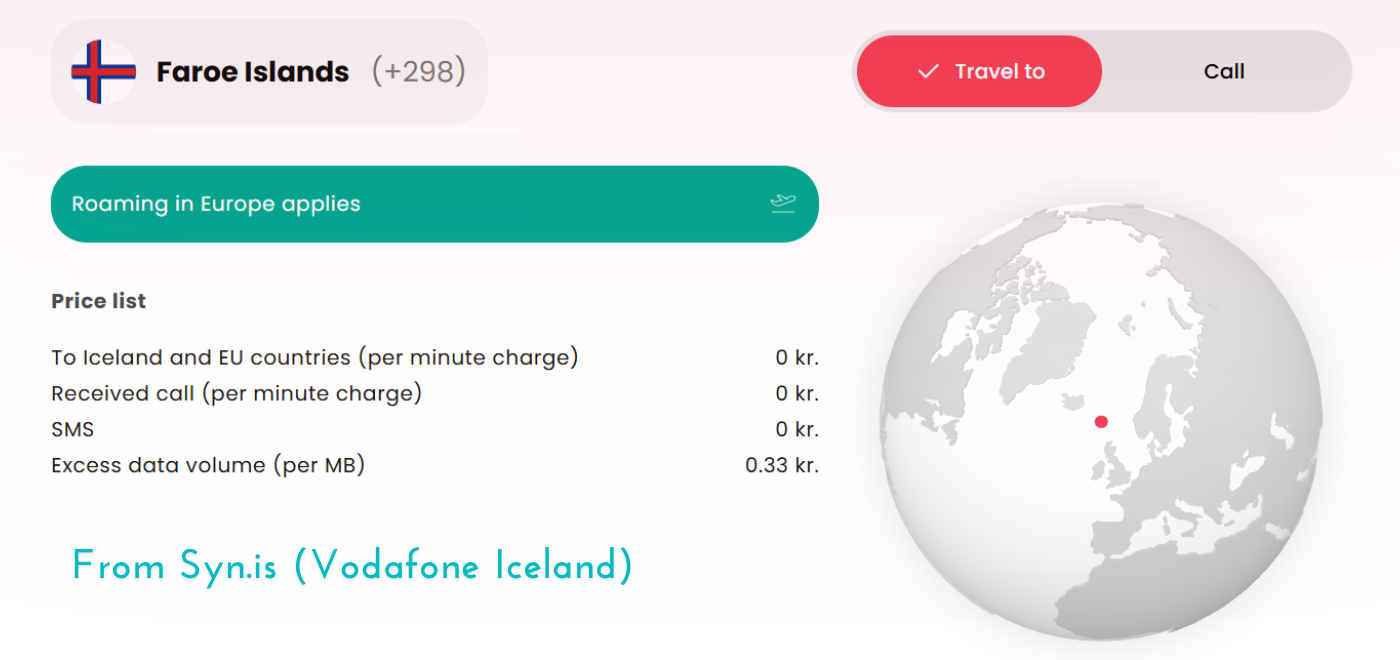
- United Kingdom: Vodafone UK, if you have a contract since 2021, with other fine print. *As in, you can’t buy a SIM card in the UK and reap the benefits in the Faroe Islands in 2025…
We came to the Faroe Islands from Iceland, but hadn’t purchased a SIM card in Iceland, since we could Roam Like At Home with our EU SIM cards. In hindsight, perhaps we should have bought an Icelandic SIM card, mostly to travel to the Faroe Islands later.
Note that despite the Faroe Islands being a part of Denmark, not all Danish telecom providers have a roaming agreement with the Faroe Islands. It is total insanity, in my opinion, that a Dane could travel to another country in its kingdom within the European continent, and come home to a surprise bill.
This, despite Danish taxpayers sending the Faroes €86 million each year under the Block Grant and hosting the Faroes’ greatest criminal offenders. All the while, the Faroes sells fish to russia, undermining the sanctions Europe has in place as a response to russian aggression in Ukraine. I would call this a “matter of common interest” for Denmark and the Faroe Islands, and not særanliggender. The Faroe Islands makes a lot of money off its offshore salmon farms by selling to russia, while being protected from russian aggression under the NATO umbrella. It appears that the Faroe Islands are having their cake and eating it too.
And no, similarly to Iceland but unlike Greenland, the Faroe Islands are/were not a colony of Denmark. The Faroese are descendants of Scandinavian settlers, albeit a bit estranged from the main peninsular Scandis. This is very different from Greenland, where there were native people before the Scandinavians arrived. Denmark later did the hard colonizing: bringing Christianity, smallpox, the Danish language, and capitalism. Those things (or a precursor) were already present in the Faroe Islands with the first settlers.
I value good-faith international cooperation immensely. Especially when that cooperation leads to mutual bits of prosperity. I can (somewhat) understand not wanting to be an EU member. But not joining the roaming agreement seems needlessly contrarian and asinine, particularly because it would also benefit the (well-traveled) Faroese people.
/rant over
Option 5: Return to Monke
Last but not least, your option is to travel the Faroe Islands more simply and disconnect.

This is what I did, mostly. I returned to more primitive times. Besides Jonas sharing his eSIM data a handful of times, I was blissfully offline. Of course, I could still navigate the Faroe Islands because I had downloaded an offline map on OSMand+. This was perfect for just navigating to the supermarket or planning a hiking route and checking the elevation gain.
Buying neither an eSIM nor a physical SIM card for the Faroe Islands is your best option if you don’t need to be reachable at all times. Or, like in my case, if you have a travel buddy who has an eSIM or SIM card with tethering. I must say I enjoyed the lack of notifications a lot.
Good info? Consider buying me a hot chocolate milk ❤️
Researched and written without AI, brought to you without annoying ads. If you managed to save some money on your trip to the Faroes, please consider making a donation. That’s what keeps these articles coming. Any questions? I’ll answer them in the comments below in a reasonable timeframe.

